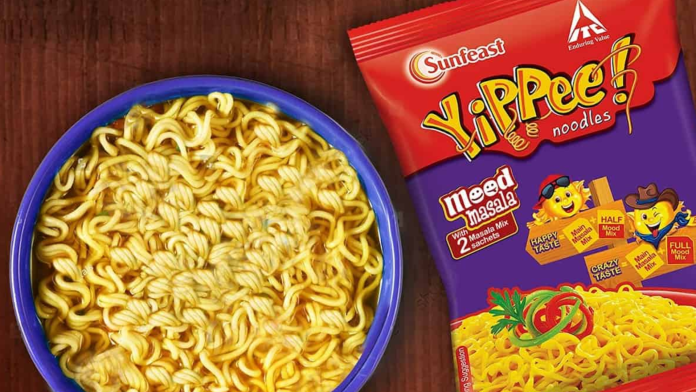Following Nestle, Sunfeast Yippee, the instant noodles brand of ITC Ltd., is staging a significant return at the INR 10 price mark to counter competition and expand its market presence, particularly in smaller towns and villages.
The manufacturer of packaged goods has introduced a new version, YiPPee! Wow Masala Noodles, available at INR 10 for a 50 gm packet. ITC’s flagship Magic Masala variant is priced at INR 12 for a 55 gm packet. Similar to many companies, ITC adjusted the price of its noodles to accommodate increasing raw material costs.
“Our flagship Magic Masala variant continues to be our key growth driver since launch,” Suresh Chand, vice president and head of marketing for snacks, noodles and pasta at ITC Foods, said in a statement on Monday.
“However, with YiPPee! Wow Masala, we are looking to satiate consumers with a differentiated and delicious flavour of instant noodles.”
Nestle India Ltd.’s Maggi holds a dominant position in the INR 40,000 crore instant noodles market. ITC follows as the second-largest player in this segment, boasting a 25% market share, trailing behind Nestle, which commands a 55% share. Other major contenders eyeing substantial roles in the instant noodles market include Hindustan Unilever Ltd.’s Knorr, Nissin Foods, and CG Corp Global’s Wai Wai brand. Additionally, Patanjali Ayurved Ltd. has entered the market with its atta noodles.
ITC’s recent release closely follows the introduction of a new INR 10 variant of Maggi noodles by the market leader. This launch also aligns with increased competition from regional players that is impacting the market shares of major companies. It’s noteworthy that the INR 10 price point attracts significant consumer interest for packaged goods manufacturers, a trend observed not only in the food category but also in non-food categories like shampoo.
Read More: Nestle to introduce 40 gm Maggi packets for INR 10 in market expansion bid
In August, the 12-month rolling sales or moving annual total of INR 10 packs experienced a 6% increase, surpassing the 5% growth observed for INR 20 packs, as per data provided by Kantar Worldpanel. The data also highlights that although the growth of INR 5 packs has slowed down, it continues to be a favored price point, contributing approximately 32% of the total volume in the food category.
“Price-point packs are extremely important to a product mix,” according to K Ramakrishnan, managing director-South Asia at Kantar Worldpanel.
“The INR 20 pack has seen steady growth over the last couple of years; however, it’s far from being as popular as INR 5 or INR 10 yet.”
In rural markets, the predominant channel for reaching consumers is through low-unit pack sizes, as stated by Nitin Gupta from Emkay Global.
As the impact of the Covid-19 pandemic diminishes and inflation subsides, smaller local competitors have gained strength. Capitalizing on reduced prices of certain raw materials utilized in the consumer goods sector, such as milk and barley, they have effectively competed with larger, well-funded corporations like ITC and Hindustan Unilever.
For instance, HUL has publicly acknowledged a loss of market share in its mass segment, which includes lower-priced products, attributed to competitive forces. According to research by Kantar covering the 12-month period ending April, the volume growth of local brands has outpaced that of national brands considerably. The recent initiative by the noodle maker is expected to assist the company in fending off local competition.



